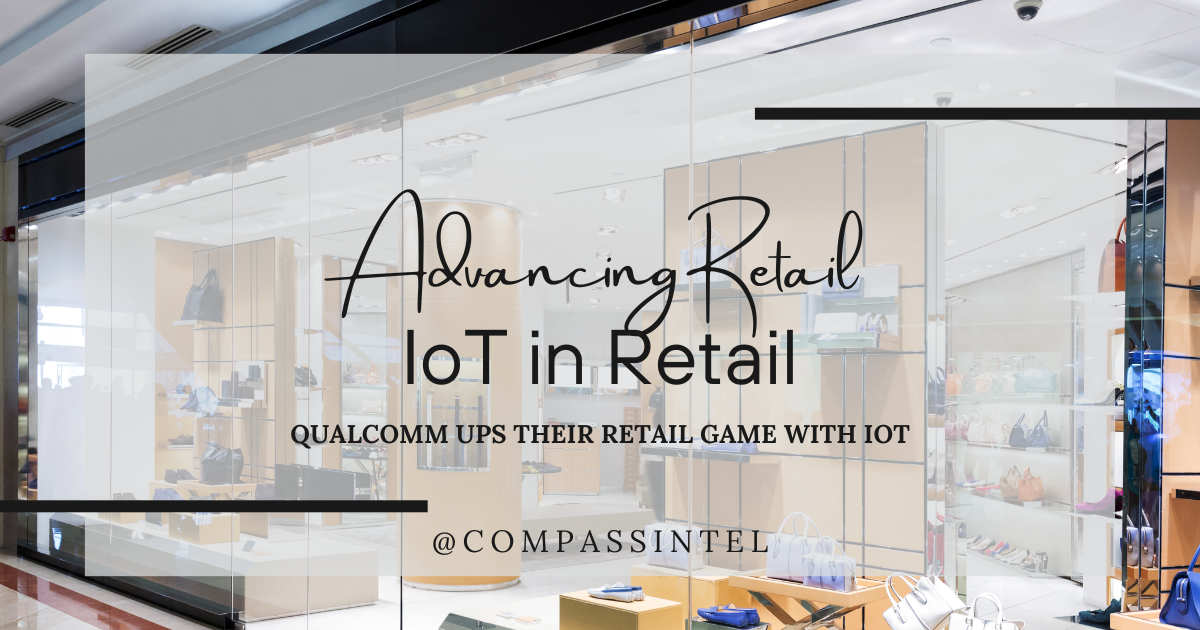|
Recently, I sat down with Art Miller to chat about Qualcomm’s IoT role in the retail sector. Art is the Global Head of Retail IoT at Qualcomm and is responsible for overall strategy in the retail vertical. Before I share more about our exciting conversation, let’s first dive into the retail industry. Retail includes a wide range of small (mom and pop, at home, direct to consumer) to large businesses (mass retailers, global chains) that sell products direct to the consumer, including those selling purely online and those that sell across all channels (in-store, online, direct). Qualcomm targets both retailers and the suppliers to retailers including the CPG market (consumer packaged goods). Suppliers may include companies like Honeywell, Zebra Technologies, Sunmi, Datalogic, Telpo, Veea, and Elo.
When thinking about retailers, a number of key hardware and equipment is used for things such as access points for public and private Wi-Fi, price and inventory scanners, security and surveillance cameras, RF scanning, point-of-sale hardware, self-checkout equipment, kiosks, shelf scanners, temperature sensors, and so much more. Art shared that Qualcomm supported both Hyvee (Elo I-Series 4 with Qualcomm SDA660 chipset) and Target on implementing price scanners and overhead cameras throughout their retail stores. As part of their partnerships in retail, point of sale is very important as consumers take control of the transactional experience. Qualcomm ships roughly 10 million Snapdragon (Android-based) point of sale (POS) devices per year working with companies like Clover and Square. They also work with Sunmi in China, who make handheld and wireless POS, barcode, and tablet devices. The retail industry continues to experience a number of trends that are made possible with technology. One of the major trends in retail for sales and marketing is the omnichannel approach. Consumers require experiences that enable in-store, online, by phone, and any other channel to provide a seamless buying and shopping experience. Tools, both software and hardware, have advanced to provide curbside, delivery, same day, and self-checkout. Self-checkout has been boosted by the pandemic, as it allows for consumers to interact less with humans, provide additional safety measure, and to help speed the checkout process. Qualcomm, for example, is using AI software running on hardware to enable “Face Pay” in China…essentially allowing the consumer to be identified, authenticated, and transact, all with the capture of the face image. Vendors Qualcomm worked with for the face pay solution include Arima (display), Clover (POS), Cyberlink (face authentication), Infineon (3D image sensor), pmdtechnologies (3D image sensor), Ordyx (POS Software), and Sunmi, while the technology is powered by Qualcomm’s QCS6125 and SDA660 processors. In addition to the trends in omnichannel and self-checkout, is the trend of sensor systems. Art shared sensors are being used to check the temperature of refrigeration (refrigerated shelf and displays) and people (for Covid safety), placed in kiosks for transactional purposes, and even being used for shelf scanning. The B2B (Business to Business) retail channel is also heavily using IoT technology for advancing the customer experience, but for this article we will focus on B2C (Business to Consumer). Qualcomm offers a range of solutions including Wi-Fi cards, modems, servers, smart cameras, and even distributed intelligence (edge, edge AI). They are currently working with more than 14,000 IoT partners and trusted advisors to support end-to-end solutions. Their retail IoT solutions are targeted around on-device AI, computer vision and sensors. Art shares that retailers are looking to upscale and empower retail employees, while also reducing overall operational costs because of Covid. Outside of the use cases being driven by the pandemic, Art shared a number of additional use cases Qualcomm has been working on with its partners. Intelligence and automation are moving closer to the customer or buyer. There is the trend of accessing real-time information at the shelf edge (Clover point of sale system can be upgraded to now be the access point for electronic shelf information) including advertising and product information. Qualcomm’s Art Miller says retailers can use E shelf labels (SES-imagotag is a partner) and pricing automation to provide improved buying experiences. Outside of digitization of the shelf, other areas of innovation include the areas of delivery and picking efficiencies using robotics (i.e., Orionstar Delivery Robot powered by Qualcomm SDA845 processor) and drones. Art shared one example where a client obtained 30% picking efficiency improvements after using a number of tools part of Qualcomm’s retail portfolio (along with partners). Art shared that modality, including payment modalities, in the store is changing, where there is increased use of AI and edge appliances, including where Qualcomm makes “dumb” cameras smart. Qualcomm will create a blueprint and then work with retail partners to provide end-to-end solutions for improved buyer experiences and operations. For example, Qualcomm is a chip-side vendor with Elo who makes retail touchscreens for Yum! Brands. Art shared that Qualcomm enables their retail partners and identifies gaps between market offers to make decisions on which OEMs/ODM to partner with, as they indirectly serve retail consumers. Qualcomm maintains a verified 3rd party ecosystem of retail relationships including distributors, design centers, hardware providers, software providers, and test centers. Qualcomm aims to enable the retail sector and its suppliers to keep “reimagining, digitizing and improving retail experiences.” Learn more about Qualcomm’s Retail offerings here: https://www.qualcomm.com/products/application/industrial-commercial/retail Comments are closed.
|
Inside MobileCovering hot topics in the industry, new research, trends, and event coverage. Categories
All
|


 RSS Feed
RSS Feed
